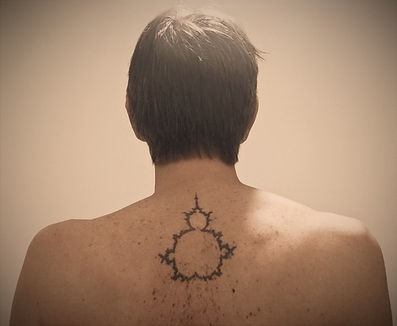Art by Mandelsage
Ars Fractalia
Refresh page!
w - Zoom In
s - Zoom Out
r - Toggle Rotation
x - New Center of Rotation
c - Toggle Un/Follow Mouse
e - Faster Rotation
q - Slower Rotation
d - Rotate Clockwise 22.5º
a - Rotate Anti-Clockwise 22.5º
i - Increase Iterations
k - Decrease Iterations
o - Increase Color Cycle Speed
l - Decrease Color Cycle Speed
p - Save PNG (with Inv. # and Hash Seed)
z - Invert Julia
Spacebar - Reset
Easter egg? Sometimes ;)
Is mathematics a discovery or an invention?
This question was ever-present in my mind not only as I created Ars Fractalia but in fact, in all my work over the last 10 years. Long before I started coding creatively, I was making art using fractals - insanely beautiful patterns found everywhere in nature, that follow relatively simple mathematical rules.
But then, that question begs a further question: If the doubt about mathematics exists, then surely the same question can be asked of art created using mathematics..? Is it created, or discovered?
My personal conclusion is, it is both. We are Life - the universe itself having found a way to experience itself, and we are the discoverers/creators of all meaning.

When I began my artistic journey over 10 years ago, I saw the crazy, beautiful, psychedelic fractal patterns that others generated and questioned: "Are those really their own creations, though?" .. This always pushed me to use fractals in original ways. I didn't want to simply generate a pretty pattern, give it a title, and call it art. I wanted my mind to be the main "generator", and the patterns only a form of paint and brush.
Which is why I now feel such deep gratification with the creation of Ars Fractalia. I coded it myself: These Julia fractals are my Julia fractals - each given a unique personality with the rest of the my own creative algorithm.
And now it is my great pleasure to present them to you.
With this work, I wanted to give you not only something beautiful to look at, but also something you can explore. Every piece contains thousands of other pieces, which you can display at virtually any resolution.
Here are the keys. Happy exploring, fractalnaught!

SOME HISTORY:
Fractals have been my paint and brush since before I started calling myself an artist.
It all started with a blog. If you are truly interested in learning about my history as an artist using fractals, this is the best place to start:
mandelubber.blogspot.com/2011/05/in-beginning-there-was-ignorance.html
But if you're only a little interested, then allow me to do a tl;dr:
In 2011, I saw some 3D fractal artwork on DeviantArt, and was blown away. I had already seen fractals on a friend's linux machine as a teenager, and was fascinated by them - but discovering that 3-dimensional ones had been discovered and could be used to create art - that hit me hard. All I could think was, "I want to do that!"
I even got my first and only (thus far) tattoo: The Mandelbrot Set, on my back:

And so my journey as an artist began. The idea of using mathematics to create science- and space-inspired art was all-consuming. But learning to use the programs and creating anything I felt I could call my own was difficult, and took time. Similarly to how I felt when I first started using MidJourney to create images, I didn't feel like the generated imagery could be called my own. Not until I'd reached a certain level of mastery at being able to discover and shape fractals into art that I felt was truly original.
I document a lot of the journey in that blog =)
And now I've come full-circle, to create, with code, my own Julias, with my own palettes and algorithms. This is a great point in my mathematical art career, and there is so much more to come.
To give you an idea... Google "Julia set explained" at some point and watch a few videos ;)
But for now, here's a deep-dive into Seahorse Valley! -: